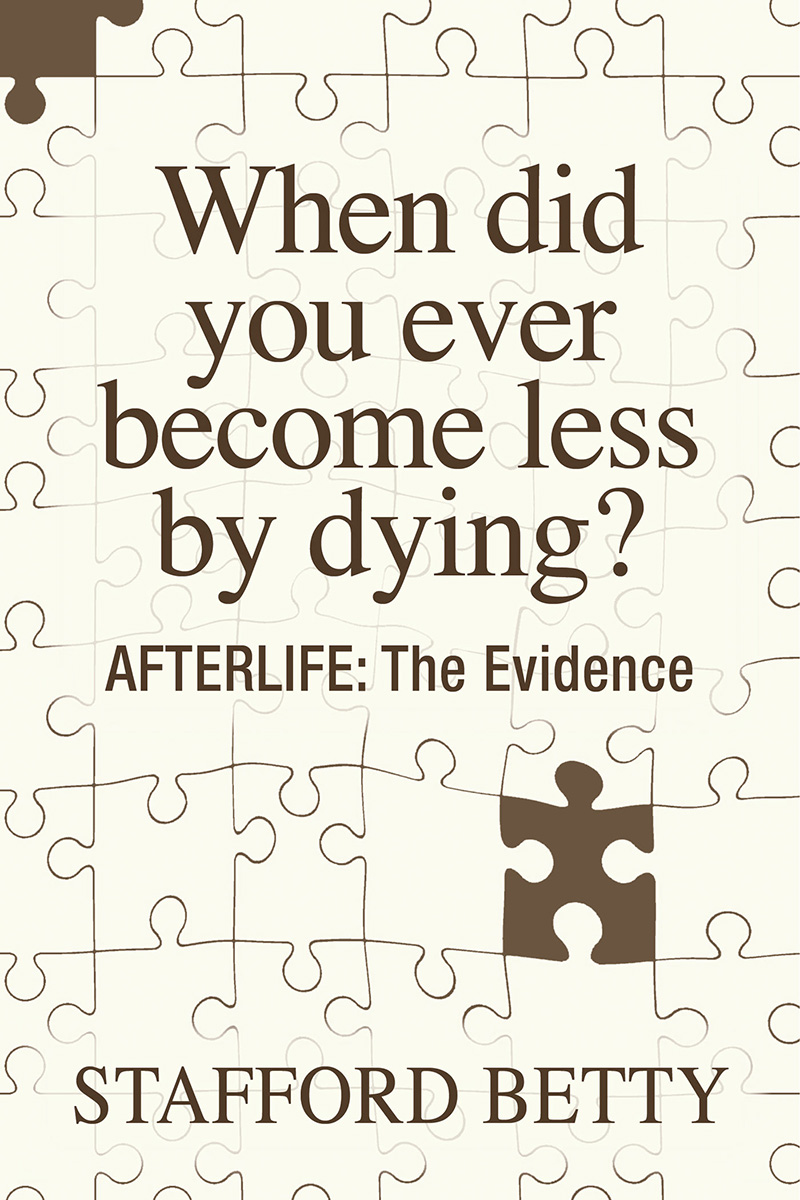Summary
In this book Professor Stafford Betty pulls together the best evidences for survival of death. The very best, he maintains, come from psychical research. The near-death experience, deathbed visions, reincarnational memories of children, communication from the so-called dead through mediums, apparitions, poltergeists, spirits that reach out to us through electronic instruments, spirits that attach themselves to our bodies, and episodes of terminal lucidity in Alzheimer’s patients are all included.
But philosophy has a lot to say as well. In simple terms Betty lays out the evidence against reductive materialism that claims all our experience is generated by the brain and that we perish at death. Viewing the brain as an instrument put to good use by the immaterial self is much more consistent with the evidence.
Finally, he surveys the universal affirmation by the world’s religions that we survive death.
Betty brings together memorable examples and careful analysis of each type of evidence. Each type is imposing enough by itself, but taken together they build a case for survival of death that is insurmountable. He shows that life after death, as mysterious as it is, should no longer be regarded as a hypothesis, but, like dark matter, a fact.
Praise for When Did You Ever Become less By Dying?
Our culture is plagued by the fear of death. How can we transform this fear into inspiration for living and dying well? This insightful work offers valuable insight, reliable information, and a message of hope.
~ Marilyn Schlitz, PhD
Author, Death Makes Life Possible (book and DVD film)
There was a time when belief in life after death was based mainly on faith and unquestioning acceptance of religious teachings, whether based on any kind of verifiable evidence or not. In the present century, the study of the continuation of consciousness following cessation of physical life has become a respectable academic subject, now based on a solid foundation of evidence from cases suggestive of reincarnation, accounts of an apparent afterlife as glimpsed in ‘near-death experiences’ and verifiable veridical statements from mediums. It is a realm to which we are all going whether we like it or not, and Stafford Betty is the ideal guide to what fact rather than faith indicates that we are likely to find there.’
~ Guy Playfair, Author, Twin Telepathy
Quoting Gandhi, Professor Stafford Betty points out that modern or Western insatiableness arises from the lack of a living faith in a future state. He lists 22 compelling reasons why the world would be better off in accepting the evidence which strongly suggests that consciousness survives bodily death and devotes 11 chapters to discussing that evidence. The person who is not bothered – or pretends not to be bothered – by the idea that death results in extinction, obliteration and nothingness will likely reject the book, but those in need of some assurance that consciousness does survive death should benefit from this book. As Betty states, it is not a matter of looking forward to an afterlife and disregarding this life, but in enriching this life by having a conviction that this life is part of a much larger one.
~ Michael Tymn, Editor, The Journal for Spiritual and Consciousness Studies
Survival after bodily death is a concept that mainstream Western science refuses to take seriously. However, Stafford Betty takes issue with the deniers and crafts eleven chapters of data from various disciplines, each of which contains enough evidence to challenge their assumptions. These chapters range from reincarnation studies to near-death experiences to deathbed visions, to name a few. There is no other book that displays such breadth and depth on this topic, that combines comprehensive coverage with a meticulous presentation of available information. “When Did You Ever Become Less by Dying?” is a question posed by the the 13th century poet Rumi. This well-reasoned, reader-friendly book poses a powerful challenge to the deniers, and clearly places the ball in their court.
~ Stanley Krippner, Ph.D., Co-editor, “Varieties of Anomalous Experience: Examining the Scientific Evidence”

